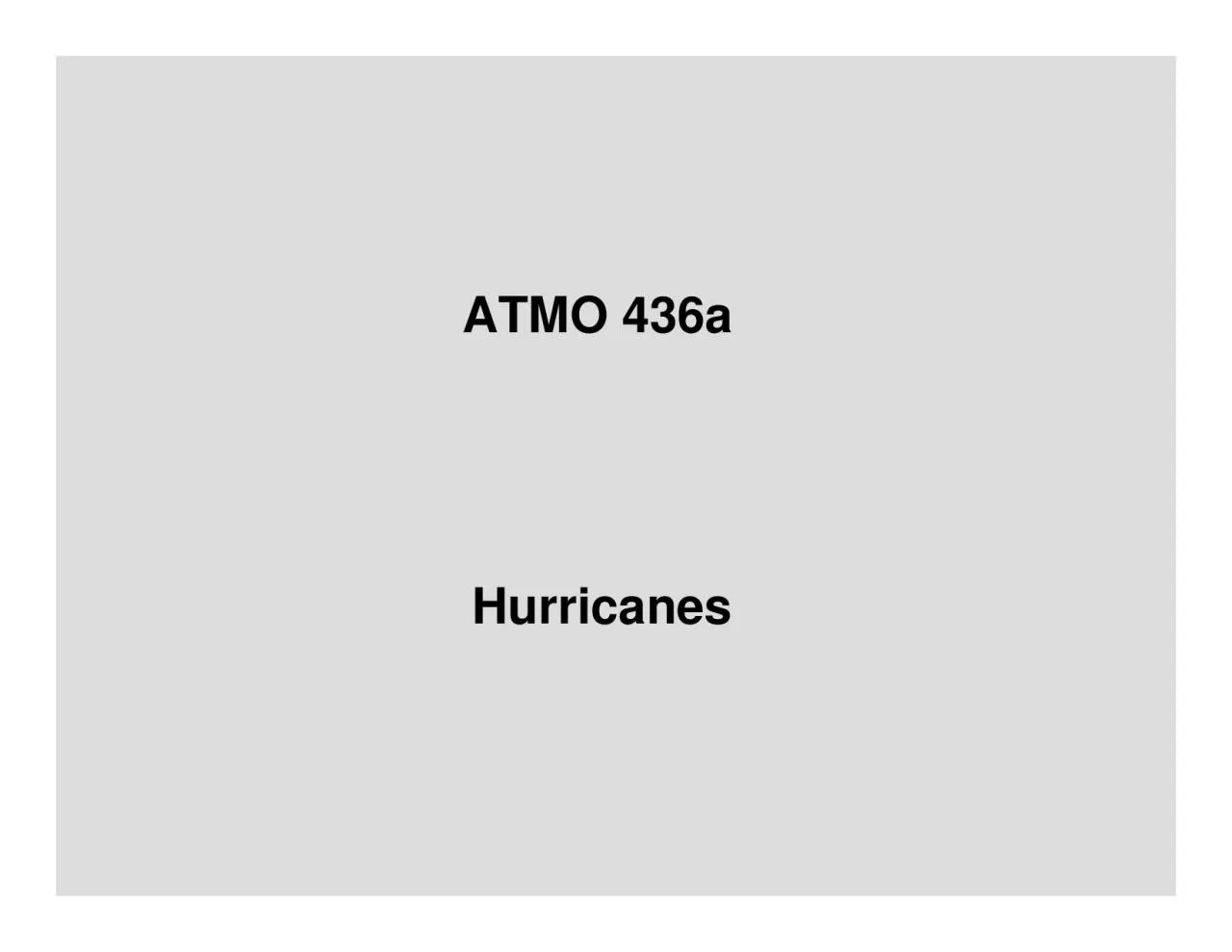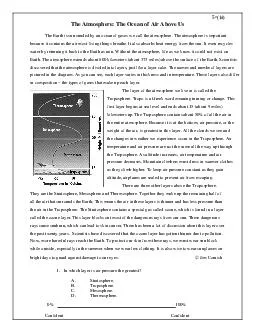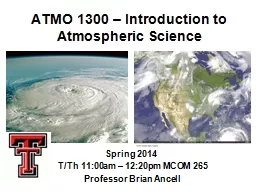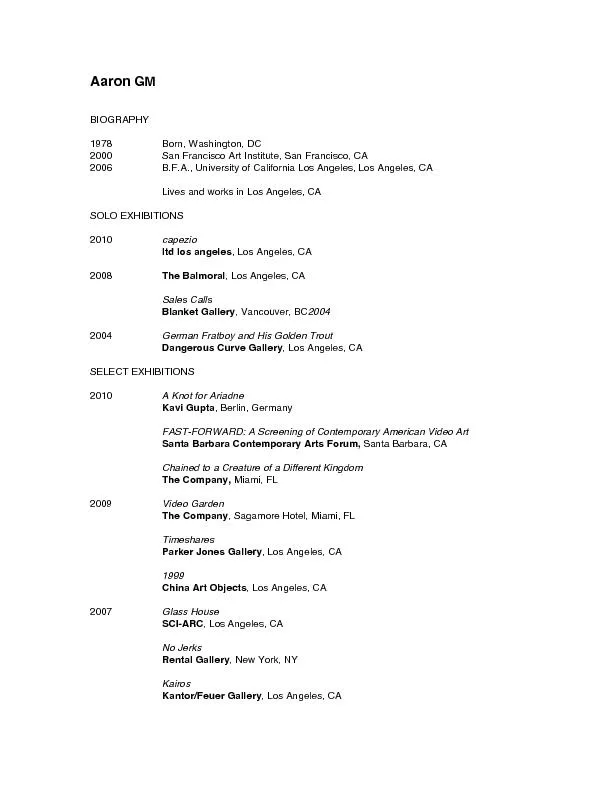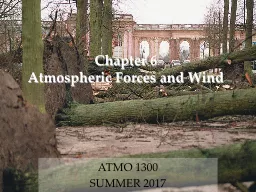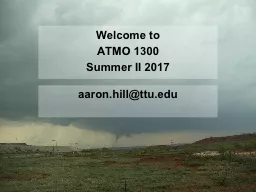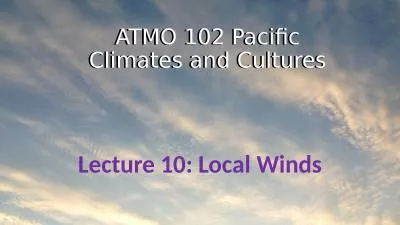PDF-ATMO 436aHurricanes
Author : dorothy | Published Date : 2022-08-21
Why are the tropics differentfrom the midlatitudes rculations not in geostrophicor summer when ITCZ is around Recall that midlatitude cyclones derive their energy
Presentation Embed Code
Download Presentation
Download Presentation The PPT/PDF document "ATMO 436aHurricanes" is the property of its rightful owner. Permission is granted to download and print the materials on this website for personal, non-commercial use only, and to display it on your personal computer provided you do not modify the materials and that you retain all copyright notices contained in the materials. By downloading content from our website, you accept the terms of this agreement.
ATMO 436aHurricanes: Transcript
Download Rules Of Document
"ATMO 436aHurricanes"The content belongs to its owner. You may download and print it for personal use, without modification, and keep all copyright notices. By downloading, you agree to these terms.
Related Documents

